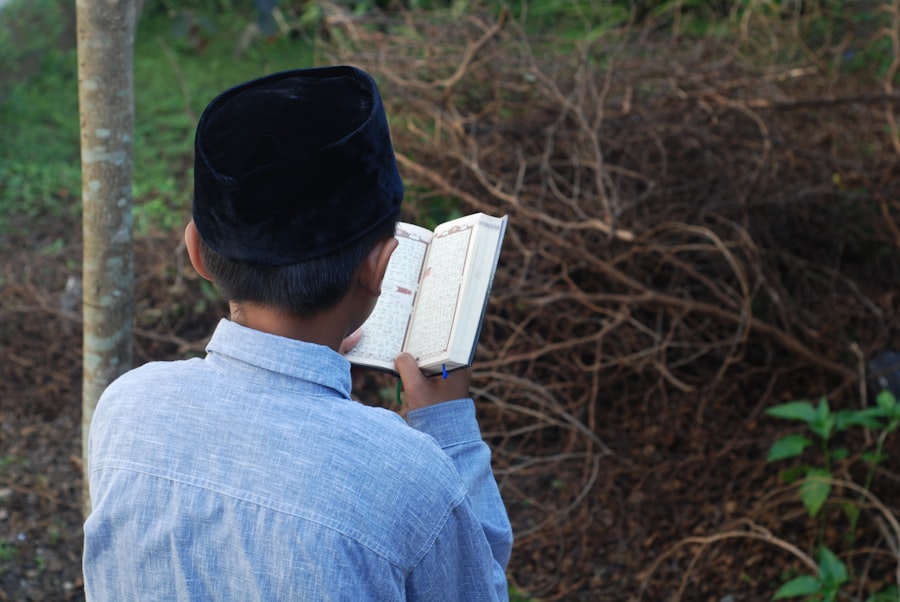As the U.
-led coalition forces advanced into Iraq in March 2003, the atmosphere in Baghdad shifted dramatically. The once-mighty regime of Saddam Hussein began to crumble under the weight of military pressure and international scrutiny. In the chaos that ensued, Saddam’s escape became a desperate race against time.
As the capital fell, he slipped away from the clutches of advancing troops, leaving behind a city that had been his stronghold for decades. The initial days of the invasion saw him retreating into the shadows, relying on a network of loyalists and sympathizers to aid his flight from the capital. Saddam’s escape was not merely a physical withdrawal; it was a calculated maneuver to preserve his life and maintain some semblance of power.
He moved through a series of safe houses, often changing locations to evade detection. The regime’s propaganda machine continued to churn out messages of defiance, but behind the scenes, the reality was starkly different. The hunt for Saddam had begun, and with it came a sense of urgency among U.S.
forces and intelligence agencies tasked with locating the elusive dictator.
Key Takeaways
- Saddam Hussein’s escape from Baghdad in 2003 marked the beginning of a high-stakes international manhunt.
- The search for Saddam Hussein intensified as U.S. forces and intelligence agencies tracked down his whereabouts.
- U.S. forces finally captured Saddam Hussein in a remote farmhouse near his hometown of Tikrit, Iraq.
- The crucial role of intelligence in providing key information led to the successful capture of Saddam Hussein.
- The capture operation involved a detailed mission to apprehend Saddam Hussein, which ultimately proved successful.
The search intensifies: Tracking down Saddam Hussein
As days turned into weeks, the search for Saddam Hussein intensified. U.S. military forces deployed advanced technology and intelligence-gathering techniques to track his movements.
Satellite imagery, intercepted communications, and ground reports from informants became crucial tools in the effort to locate him.
The challenge was immense; Saddam was not only skilled at evasion but also had a deep understanding of the terrain and the loyalties of those around him.
His supporters were fiercely loyal, often willing to risk their own safety to protect him. As the search expanded beyond Baghdad into rural areas and neighboring regions, U.S. forces faced the daunting task of sifting through a complex web of misinformation and false leads.
Each day that passed without capturing Saddam only fueled the determination of those involved in the hunt.
After months of relentless searching, U.S. forces finally received a breakthrough in December 2003. A combination of intelligence reports and tips from local informants led them to a farm near Tikrit, Saddam’s hometown.
The operation was meticulously planned, with special forces units prepared for any eventuality. On December 13, 2003, they executed a raid that would change the course of history. As they approached the compound, they were met with little resistance, but the tension was palpable; they knew they were closing in on one of the most wanted men in the world.
When they finally located Saddam Hussein hiding in a small underground hideout, the moment was surreal. The former dictator was captured without a fight, emerging from his hiding place disheveled and unkempt. His capture marked a significant turning point in the Iraq War and symbolized the collapse of his regime.
The images of his apprehension would soon be broadcast around the globe, serving as a powerful reminder of the consequences of tyranny and oppression.
The hideout: Where Saddam Hussein was found

Saddam Hussein’s hideout was a stark contrast to the opulence that characterized his rule. Located on a farm in Ad-Dawr, near Tikrit, it was a simple structure with minimal amenities. The underground bunker where he was discovered was small and cramped, reflecting the desperate circumstances under which he had been living since his escape from Baghdad.
This hideout was equipped with basic supplies, but it lacked any semblance of luxury or comfort that he had once enjoyed as president. The choice of such an inconspicuous location highlighted Saddam’s awareness of his precarious situation. He had retreated to a rural area where he believed he could blend in with the local population and avoid detection by coalition forces.
However, this decision ultimately proved futile as intelligence operatives pieced together information about his whereabouts. The discovery of his hideout not only marked the end of his evasion but also served as a testament to how far he had fallen from power.
The role of intelligence: How crucial information led to Saddam Hussein’s capture
| Intelligence Source | Role in Capture |
|---|---|
| Human Intelligence (HUMINT) | Provided specific location and movements of Saddam Hussein |
| Signals Intelligence (SIGINT) | Intercepted communications leading to key insights |
| Imagery Intelligence (IMINT) | Provided satellite imagery for tracking and planning |
| Open Source Intelligence (OSINT) | Contributed to understanding of local dynamics and networks |
Intelligence played a pivotal role in the successful capture of Saddam Hussein. The U.S. military relied heavily on various sources of information, including satellite surveillance, intercepted communications, and tips from local informants who were disillusioned with Saddam’s regime.
This multifaceted approach allowed them to build a clearer picture of his movements and potential hideouts. As time went on, intelligence analysts worked tirelessly to sift through mountains of data, searching for any clue that could lead them to the former dictator. One key aspect of this intelligence effort was establishing relationships with local communities.
Many Iraqis were eager to see an end to Saddam’s rule and were willing to provide information about his whereabouts in exchange for safety or financial rewards. This grassroots intelligence network proved invaluable as it helped U.S. forces narrow down their search area significantly.
Ultimately, it was this combination of high-tech surveillance and local knowledge that culminated in the successful capture of one of history’s most notorious leaders.
The capture operation: Details of the mission to apprehend Saddam Hussein
The operation to capture Saddam Hussein was executed with precision and urgency. On December 13, 2003, U.S. Special Forces launched a raid on the farm where he was believed to be hiding.
The mission involved multiple units working in coordination to ensure that they could secure the area quickly and effectively. As they approached the compound under cover of darkness, every detail had been meticulously planned to minimize risks and maximize their chances of success. Upon entering the compound, U.S.
forces encountered little resistance; however, they remained vigilant as they searched for their target. When they finally located Saddam in his underground hideout, he was taken by surprise but offered no resistance during his capture. The operation concluded swiftly, with troops securing him and transporting him away from the scene before any potential reinforcements could arrive.
This successful mission not only marked a significant victory for U.S. forces but also sent shockwaves throughout Iraq and beyond.
The aftermath: What happened to Saddam Hussein after his capture

Following his capture, Saddam Hussein was transported to a secure facility where he would be held for interrogation and trial. Initially, he remained defiant, refusing to acknowledge his defeat or express remorse for his actions during his rule. His demeanor during interrogations revealed much about his character; he maintained an air of arrogance and entitlement that had characterized his leadership style for years.
In June 2004, Saddam was formally charged with crimes against humanity for his role in the brutal repression of dissent within Iraq, particularly during events such as the Anfal campaign against the Kurdish population in the late 1980s. His trial became a focal point for both Iraqis seeking justice and international observers interested in accountability for war crimes. Ultimately, he was convicted and sentenced to death by hanging in November 2006, marking a dramatic conclusion to his tumultuous life.
International reaction: How the world responded to Saddam Hussein’s capture
The capture of Saddam Hussein elicited a wide range of reactions from around the globe. Many countries welcomed the news as a significant step toward stabilizing Iraq and promoting justice for victims of his regime’s atrocities. Leaders from various nations expressed their support for U.S.
efforts in Iraq and viewed Saddam’s capture as an opportunity for healing and rebuilding within the war-torn country. Conversely, there were also voices of dissent that criticized the manner in which he was captured and tried. Some argued that his trial did not meet international standards for fairness and transparency, raising concerns about due process and human rights violations during his detention.
This division in international opinion highlighted the complexities surrounding Iraq’s post-war landscape and underscored ongoing debates about sovereignty, justice, and accountability in conflict situations.
Impact on the Iraq War: How Saddam Hussein’s capture affected the conflict
Saddam Hussein’s capture had profound implications for the ongoing Iraq War. Initially celebrated as a major victory by U.S. forces and their allies, it raised hopes that stability could be restored in Iraq following years of violence and upheaval.
However, rather than leading to an immediate resolution of conflict, his capture seemed to exacerbate existing tensions within Iraqi society. The power vacuum left by Saddam’s removal led to increased sectarian violence as various factions vied for control over territory and resources. Insurgent groups capitalized on this instability, leading to an escalation in attacks against coalition forces and Iraqi civilians alike.
In many ways, Saddam’s capture marked not just an end but also a new chapter in Iraq’s struggle for peace—a chapter fraught with challenges that would continue to unfold for years to come.
Lessons learned: What the capture of Saddam Hussein taught military and intelligence agencies
The operation that led to Saddam Hussein’s capture provided valuable lessons for military and intelligence agencies worldwide. One key takeaway was the importance of integrating various sources of intelligence—both technological and human—to create a comprehensive understanding of complex situations on the ground. The success of local informants in providing actionable information underscored how critical community engagement can be in conflict zones.
Additionally, the operation highlighted the need for adaptability in military strategy. As circumstances evolved rapidly during the Iraq War, U.S. forces demonstrated an ability to pivot their tactics based on real-time intelligence updates and changing conditions on the ground.
This flexibility proved essential not only in capturing Saddam but also in addressing ongoing challenges throughout Iraq.
Legacy: How the capture of Saddam Hussein continues to influence global politics
The legacy of Saddam Hussein’s capture continues to resonate within global politics today. It serves as a reminder of both the complexities inherent in regime change and the challenges associated with post-conflict reconstruction efforts. While some view his apprehension as a necessary step toward justice for victims of tyranny, others caution against oversimplifying its implications for international relations.
Moreover, discussions surrounding accountability for war crimes have gained renewed attention in light of Saddam’s trial and execution. His case has become emblematic of broader debates about how nations address past atrocities while striving for reconciliation and stability in post-conflict societies. As such, Saddam Hussein’s capture remains not just a historical event but also a pivotal moment that continues to shape conversations about justice, governance, and human rights on a global scale.
The capture of Saddam Hussein was a significant event in the Iraq War, marking a pivotal moment in the conflict. It took U.S. forces approximately eight months to locate and apprehend the former Iraqi leader after the initial invasion in March 2003. For those interested in exploring more about the timeline and details of this operation, a related article can be found on the Hey Did You Know This website. You can read more about it by visiting this link.
WATCH NOW! How the US Hunted and Captured Saddam Hussein: The Untold Story of Operation Red Dawn
FAQs
How long did it take to capture Saddam Hussein?
It took approximately 8 months to capture Saddam Hussein after he went into hiding following the 2003 invasion of Iraq.
When was Saddam Hussein captured?
Saddam Hussein was captured on December 13, 2003, near his hometown of Tikrit, Iraq.
Who was involved in the capture of Saddam Hussein?
The capture of Saddam Hussein was carried out by a joint operation involving the United States military, the CIA, and Iraqi security forces.
Where was Saddam Hussein found?
Saddam Hussein was found hiding in a small underground hideout near a farmhouse outside the town of Ad-Dawr, near Tikrit, Iraq.
What was the significance of capturing Saddam Hussein?
The capture of Saddam Hussein was a significant milestone in the Iraq War, as it marked the end of his regime and was seen as a major victory for the coalition forces.
